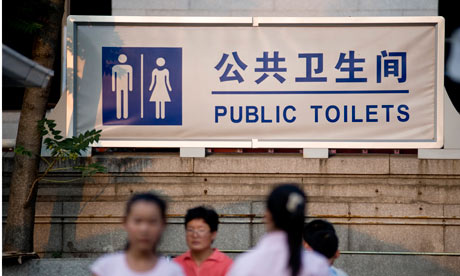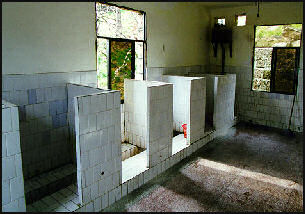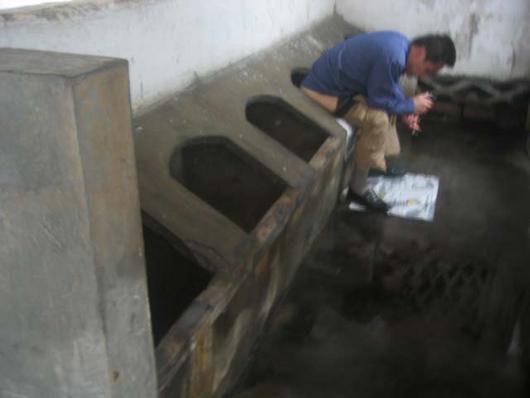http://news.takungpao.com/paper/q/2014/0108/2160621.html
here's a loose translation of the news article:
(zaobao.com.sg also carried the news)
Lee Kuan Yew Ancestral Home Tourist Park Attractions
CNS Meizhou - Guangdong Dapu county to spend 40 million yuan to build the Lee Kuan Yew, the ancestral home of tourist attractions. Construction officially commenced on 7 Jan.
Lee's ancestral tourism area covers about 1,200 acres, according to the national 4A level scenic spots standards to create major construction projects are tourism and leisure shopping street, Wetland Park, entrance landscape area, vacation villas, eco-farm recreation area, rural tourist area, Lake landscape viewing area, visit the ancient village of Hakka area, fruit trees picking area, ascend viewing area and so on.
The project will be carried out in three phases. Phase One comprise of one main building housing Lee Kuan Yew memorial, landscape lake, streams retaining wall, parking, water park, Hakka folk Square, invested about 15 million yuan, is expected to be completed in May 2014. Phase Two and Three includes landscape areas, wetland, rural tourist area, vacation villas, fruit trees and picking zones. Total investment for Phase two and three is about 22 million yuan.
Lee's ancestral home "Zhong Han Di," built during the Qing dynasty years (AD 1884) by Lee Kuan Yew's great-grandfather Li Muwen, is a "Xia Hu" style Hakka vernacular architecture of brick structure covers an area of 230 square meters and construction area of 180 square meters.
In 2007, Dapu county government restored "Zhong Han Di" in accordance with the principle of "conservation according to historic authenticity" . In 2008, the overall construction of the surrounding facilities and within "Zhong Han Di" commenced to showcase the career of Mr Lee Kuan Yew through an exhibition of text and graphical panels which cover Lee's genealogy, Lee Kuan Yew brief chronology, family life, political life and an introduction to Lee Hsien Loong.
To further enhance the development of celebrity tourism, the ancestral home of the Lee Kuan Yew will be combined with the construction of Chinese Hakka cultural and ecological protection zones, and positioned as a major construction project in 2014. "We will go all out to complete the project which will be a distinctive, functional cultural leisure and tourism resort. The ancestral home of the Lee Kuan Yew rural tourism area will be an international tourist destination," says Dapu County Party Secretary Tai Lin Jianxiong.
Inheriting Ancestral Home's Longevity Genes
Li Muwen left for Singapore in 1864 to earn a living. He become a successful businessman and after making a great fortune, he returned to the ancestral village and built "Zhong Han Di." It is worth mentioning that Dapu is a Hakka district with a high proportion of centenarians. The Chinese government officially granted the title of "China's village of longevity" to Dapu county. Lee Kuan Yew, at the age of ninety has remained healthy and clear in thoughts , seems to have inherited longevity genes from the ancestral homeland. Coincidentally, on 16 September 2013, Gerontological Society of China held a "longevity" awarding ceremony in Guangdong Tai Po, which is the day of Lee's ninetieth birthday.
here's a loose translation of the news article:
(zaobao.com.sg also carried the news)
Lee Kuan Yew Ancestral Home Tourist Park Attractions
CNS Meizhou - Guangdong Dapu county to spend 40 million yuan to build the Lee Kuan Yew, the ancestral home of tourist attractions. Construction officially commenced on 7 Jan.
Lee's ancestral tourism area covers about 1,200 acres, according to the national 4A level scenic spots standards to create major construction projects are tourism and leisure shopping street, Wetland Park, entrance landscape area, vacation villas, eco-farm recreation area, rural tourist area, Lake landscape viewing area, visit the ancient village of Hakka area, fruit trees picking area, ascend viewing area and so on.
The project will be carried out in three phases. Phase One comprise of one main building housing Lee Kuan Yew memorial, landscape lake, streams retaining wall, parking, water park, Hakka folk Square, invested about 15 million yuan, is expected to be completed in May 2014. Phase Two and Three includes landscape areas, wetland, rural tourist area, vacation villas, fruit trees and picking zones. Total investment for Phase two and three is about 22 million yuan.
Lee's ancestral home "Zhong Han Di," built during the Qing dynasty years (AD 1884) by Lee Kuan Yew's great-grandfather Li Muwen, is a "Xia Hu" style Hakka vernacular architecture of brick structure covers an area of 230 square meters and construction area of 180 square meters.
In 2007, Dapu county government restored "Zhong Han Di" in accordance with the principle of "conservation according to historic authenticity" . In 2008, the overall construction of the surrounding facilities and within "Zhong Han Di" commenced to showcase the career of Mr Lee Kuan Yew through an exhibition of text and graphical panels which cover Lee's genealogy, Lee Kuan Yew brief chronology, family life, political life and an introduction to Lee Hsien Loong.
To further enhance the development of celebrity tourism, the ancestral home of the Lee Kuan Yew will be combined with the construction of Chinese Hakka cultural and ecological protection zones, and positioned as a major construction project in 2014. "We will go all out to complete the project which will be a distinctive, functional cultural leisure and tourism resort. The ancestral home of the Lee Kuan Yew rural tourism area will be an international tourist destination," says Dapu County Party Secretary Tai Lin Jianxiong.
Inheriting Ancestral Home's Longevity Genes
Li Muwen left for Singapore in 1864 to earn a living. He become a successful businessman and after making a great fortune, he returned to the ancestral village and built "Zhong Han Di." It is worth mentioning that Dapu is a Hakka district with a high proportion of centenarians. The Chinese government officially granted the title of "China's village of longevity" to Dapu county. Lee Kuan Yew, at the age of ninety has remained healthy and clear in thoughts , seems to have inherited longevity genes from the ancestral homeland. Coincidentally, on 16 September 2013, Gerontological Society of China held a "longevity" awarding ceremony in Guangdong Tai Po, which is the day of Lee's ninetieth birthday.
Last edited:







